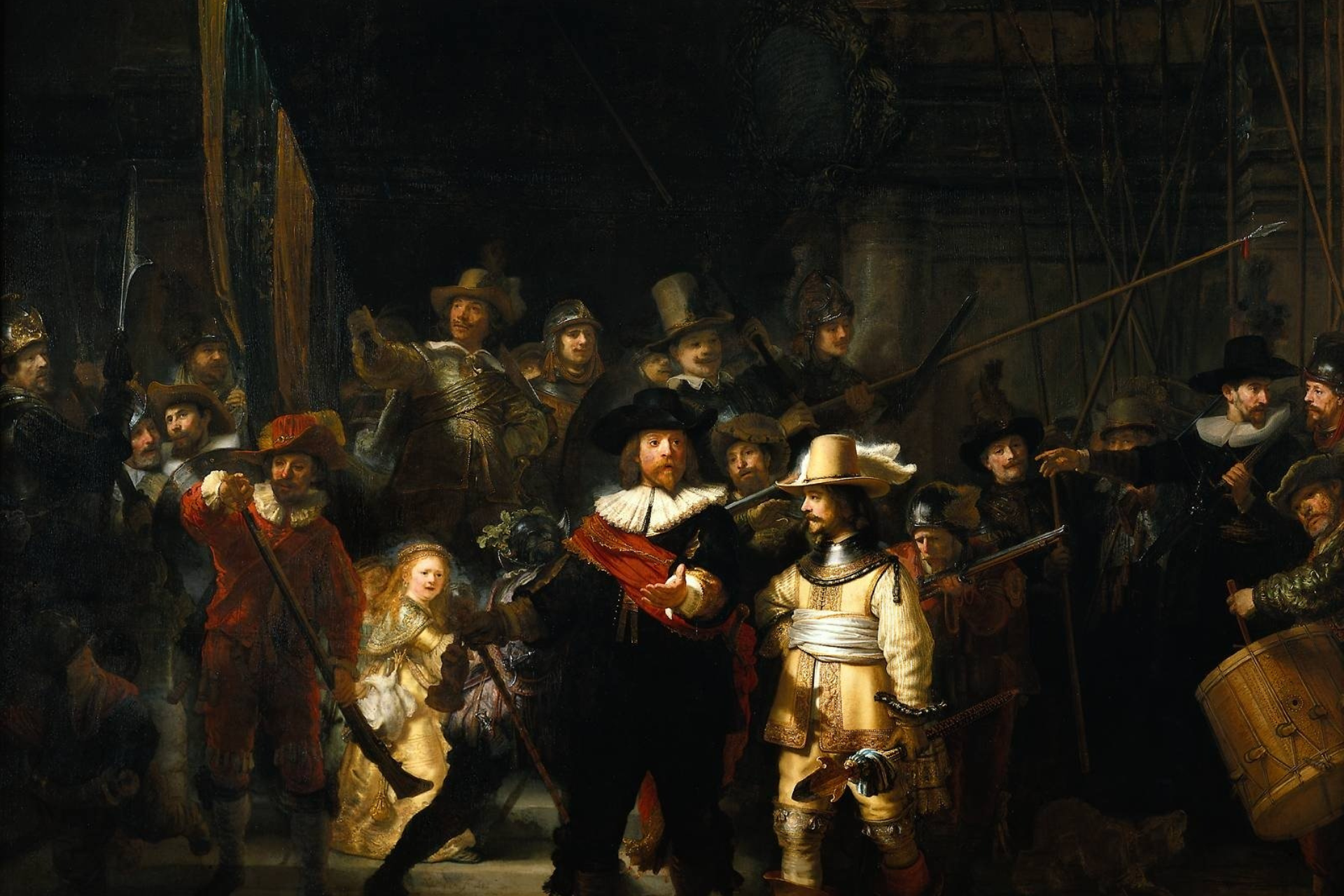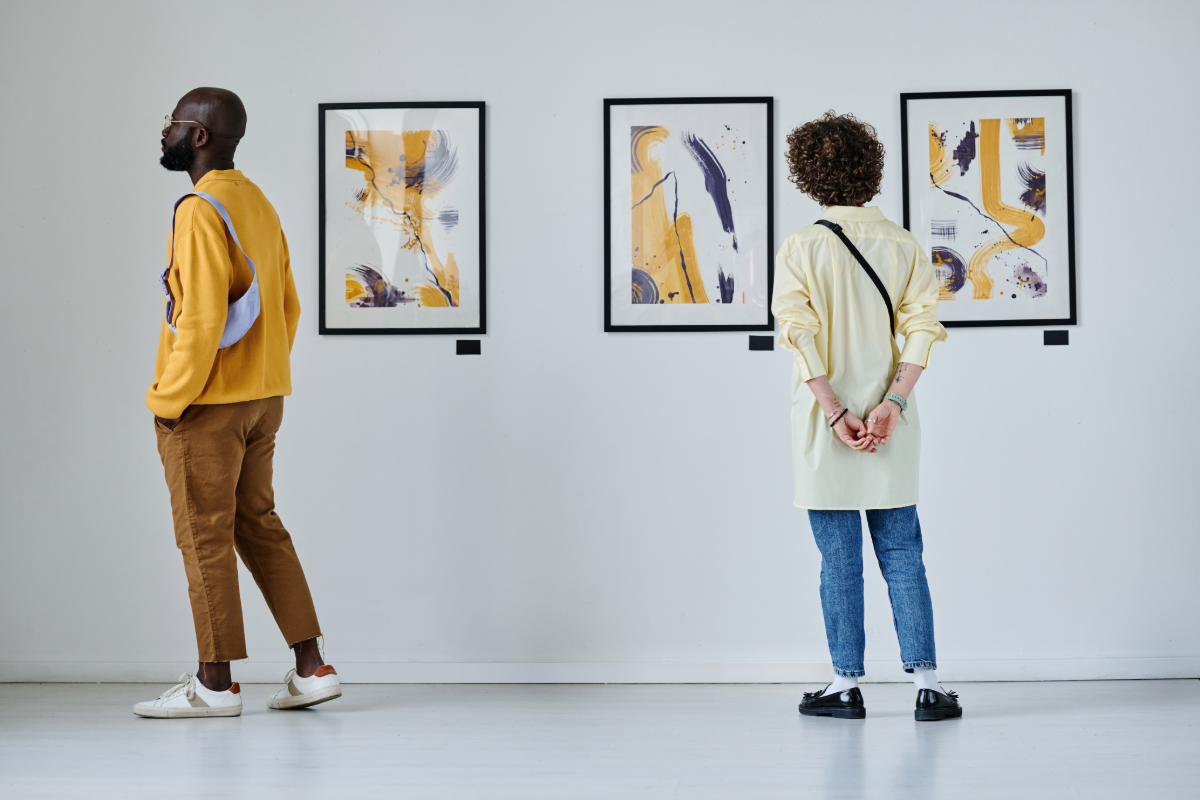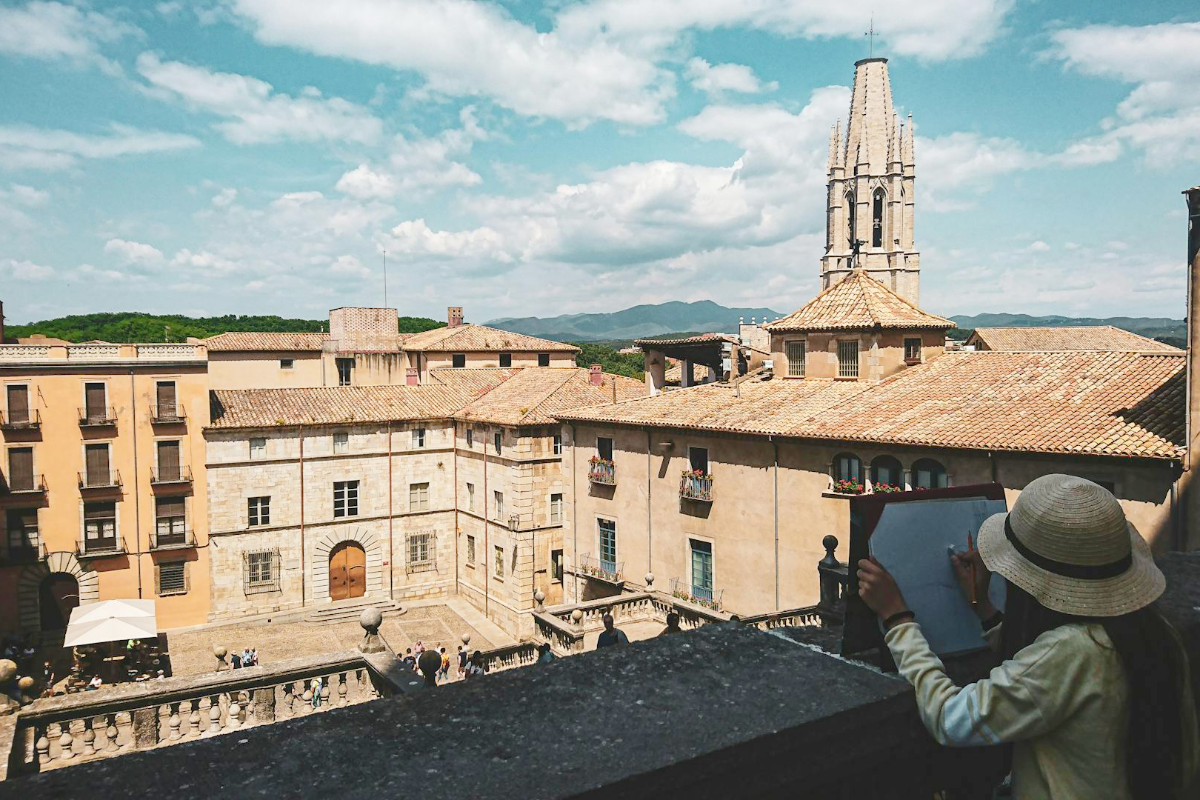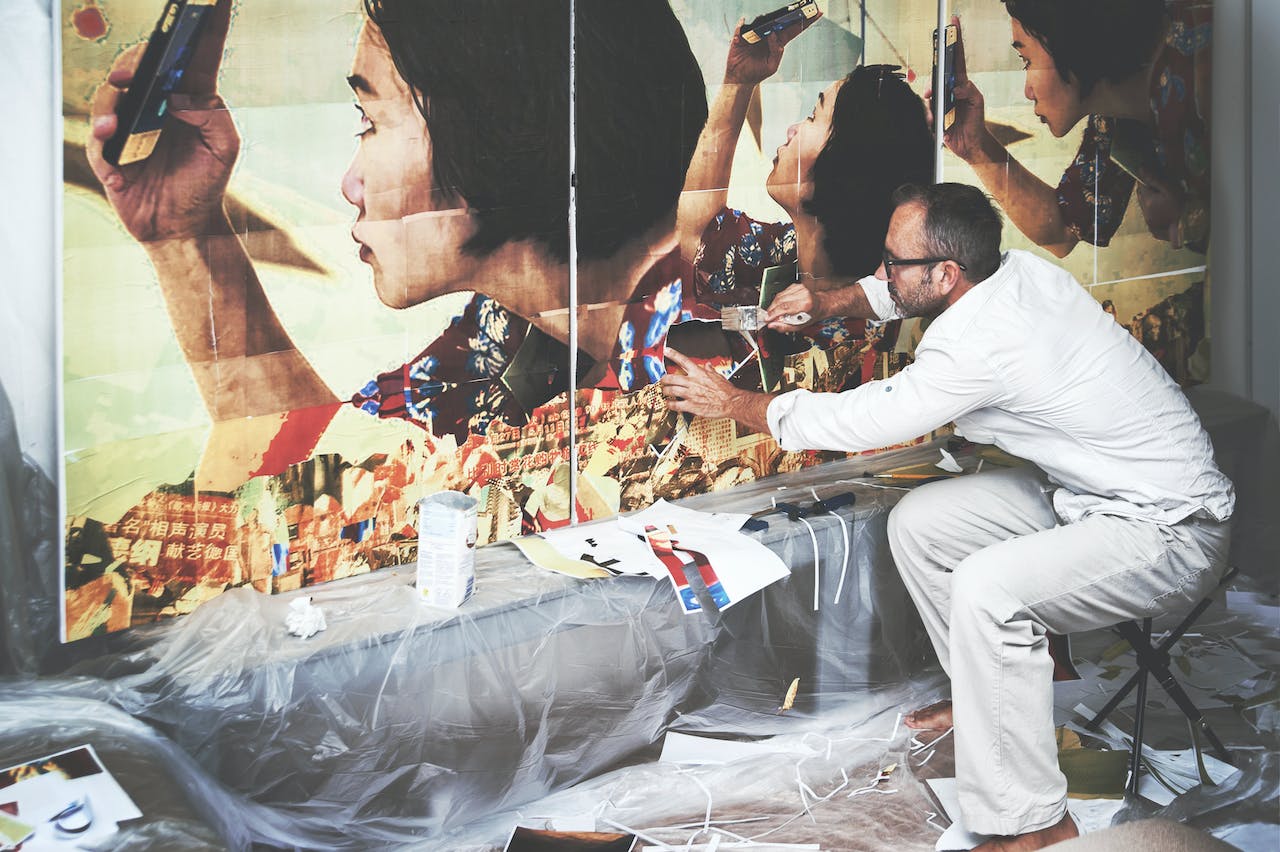Ten Of The Most Influential Art Movements Throughout History
Over the course of history, a multitude of art movements have emerged around the world, leaving a profound impact on the artistic landscape and influencing the way creativity is expressed. While determining the absolute “most” influential art movements is subjective, there are some that stand out for their profound influence. In this guide, we invite you to explore ten of these transformative movements, where we will delve into their unique characteristics, notable artists, and their lasting impact on the art world.
Whether you are an artist, art enthusiast, student, or simply curious about the rich tapestry of art history, TheArtList is here to support your artistic journey by connecting you with opportunities, resources, and endless inspiration. Come, immerse yourself in the fascinating world of art history, and let your creative spirit soar.
1. Classical Greek Art (5th-4th century BCE)
In the 5th century BCE, the Greek states engaged in an intense, prolonged conflict with the Persian Empire, known as the Persian Wars. After decades of fighting, the Greeks emerged victorious, marking a significant turning point in their history. The period that followed, from the end of the Persian Wars until the death of Alexander the Great, is known as the Classical Period of Ancient Greece. This era brought about profound political and cultural changes throughout Greece.
During the Classical Period, Greek art underwent notable transformations. In its early phase, known as early classical Greek art, artists pursued perfection and idealization in their works. Sculptures from this period aimed to depict figures with flawless proportions, seeking to capture the epitome of beauty and physical excellence.
In contrast, the later phase of classical Greek art portrayed sculptures with imperfections and conveyed a wide range of human emotions, introducing a new level of realism and emotional depth. Additionally, during this later period, decorative elements began to be incorporated into architectural designs, enhancing the overall aesthetic appeal of structures.
Architecture also thrived during this time, with the Greeks constructing magnificent temples that exemplified harmonious proportions and intricate details. One of the most iconic examples is the Parthenon, a temple atop the Acropolis in Athens, which continues to awe viewers with its architectural excellence and aesthetic refinement.
Narrative and mythology played a significant role in Greek art, as artists frequently depicted scenes from mythology, epic literature, and historical events. Sculpture, vase painting, and relief work were visual narratives, retelling Greek culture and beliefs. Greek vase painting, known for its black-figure and red-figure styles, presented intricate depictions of mythology, everyday life, and warfare, offering valuable insights into Greek society and culture.
Greek sculpture introduced a technique called contrapposto, which introduced naturalistic movement and conveyed a sense of dynamism. This pose shifted the body’s weight onto one leg, resulting in subtle shifts in the hips and shoulders, capturing a lifelike quality in the sculptures. The theater also thrived during this period, with Greek tragedies and comedies captivating audiences through elaborate masks and costumes, enhancing the overall artistic experience.
The Classical Greek period witnessed a significant milestone in the art world: the recognition and acknowledgment of individual artists. During this time, artists began to be commonly credited with their works, marking a pivotal shift in the appreciation and understanding of their contributions. This newfound recognition not only celebrated the talent and skill of these artists but also laid the groundwork for the development of artistic careers.
The legacy of Classical Greek art continues to inspire artists, scholars, and enthusiasts worldwide. Its pursuit of idealized beauty, commitment to naturalism, and mastery of architectural form remain unparalleled. Classical Greek art stands as a testament to the extraordinary heights artistic creativity can reach, leaving an enduring mark on the foundations of Western art.
2. Roman Art (1st century BCE – 4th century CE)
Roman art, developed over several centuries, displayed a distinct style while being heavily influenced by earlier Greek art. The Romans initially drew inspiration from Greek techniques, styles, and motifs, particularly during the Republican period. However, they gradually developed their own artistic identity, adapting and incorporating various cultural influences.
Realism and portraiture played a vital role in Roman art. Roman portraiture aimed to capture the likeness and character of the subjects. Portraits were highly realistic, depicting imperfections, wrinkles, and signs of aging, which were believed to reflect the individual’s identity and personality. The Romans valued the preservation of individuality in their portraiture, highlighting the importance of representing people as they truly were.
One of the significant contributions of Roman art was its mastery of monumental architecture. The ancient Romans excelled in constructing awe-inspiring structures that showcased their engineering prowess and reflected their grandeur. Triumphal arches, amphitheaters such as the Colosseum, aqueducts, and basilicas were among the remarkable architectural achievements of the time. These buildings served practical purposes, such as commemorating important events, and were also symbols of Roman power and dominance.
Mosaics and frescoes were extensively used in Roman art as decorative elements in both public and private spaces. Mosaics, composed of small colored tiles called tesserae, created intricate compositions portraying a wide range of subjects, including mythological scenes, landscapes, and scenes from daily life. Frescoes, painted directly on wet plaster, adorned walls and ceilings with vibrant colors and detailed narratives, adding beauty and storytelling to architectural spaces.
Roman art also excelled in architectural ornamentation. The Romans incorporated decorative elements such as columns, pediments, and friezes adorned with intricate relief sculptures. These embellishments added richness and visual interest to buildings, reflecting Roman wealth and sophistication.
Sculpture in Roman art encompassed elements of realism, idealization, and historical narratives. Portrait sculptures captured individuals in a naturalistic manner, conveying their personality and social status. Mythological and historical figures were also popular subjects, allowing artists to depict stories and events from Roman history and mythology.
Furthermore, Roman art often served political and propagandistic purposes. Emperors and elite patrons commissioned artworks to promote their authority, celebrate military victories, and establish a sense of continuity and power. This can be seen in the grand architectural projects, triumphal reliefs, and imperial portraits that glorified Roman rule.
The Romans were innovative in their architectural techniques, using materials like concrete, arches, and vaults to construct larger, more durable structures with intricate interior spaces. These architectural advancements greatly influenced subsequent civilizations, leaving a lasting impact on the development of architectural design and construction.
Roman art represents a fusion of influences from Greek art, Etruscan traditions, and distinct Roman cultural elements. Its monumental architecture, intricate mosaics, realistic portraiture, and propagandistic intent contribute to its enduring legacy and its significant influence on subsequent periods of art and architecture.
3. Renaissance (14th – 17th centuries)
The Renaissance art movement marked a profound shift in artistic thinking and practice. It celebrated the potential of the individual, emphasized naturalism, incorporated classical elements, and fostered groundbreaking advancements in technique and perspective. The movement was characterized by a renewed emphasis on humanism, which focused on the potential, achievements, and dignity of the individual.
One of the defining characteristics of Renaissance art was its commitment to naturalism and realism. Artists meticulously studied human anatomy, perspective, and the play of light and shadow. They aimed to depict the natural world as realistically as possible, creating lifelike and believable representations. Artists like Leonardo da Vinci and Michelangelo made significant advancements in achieving naturalistic depictions, setting new standards for artistic excellence.
Renaissance artists sought to depict the beauty and complexity of the human form, both physically and intellectually. They aspired to capture the essence of the human experience through their art, portraying emotions, intellect, and the human body with remarkable detail and precision.
Renaissance artists revolutionized the use of perspective, a technique that allowed them to create the illusion of three-dimensional space on a two-dimensional surface. By mastering the principles of linear perspective, artists could depict depth and spatial relationships with unprecedented accuracy. Artists like Masaccio and Piero della Francesca made notable contributions to the development of perspective, leading to more immersive and realistic compositions.
The Renaissance art movement also drew inspiration from the art and culture of ancient Greece and Rome. Artists sought to revive the classical ideals of harmony, proportion, and balance in their works. Greek and Roman mythology, classical motifs, and architectural forms often served as subject matter for Renaissance artists. They incorporated these classical elements into their compositions, infusing their works with a sense of grandeur and timeless beauty.
In their pursuit of reviving classical art, Renaissance artists studied and emulated the techniques of ancient Greek and Roman masters. They embraced techniques such as contrapposto, which conveyed natural movement; chiaroscuro, the contrast between light and shadow; and sfumato, a technique of subtle blending and softening of edges. By adopting and refining these techniques, Renaissance artists achieved a level of technical skill and sophistication unparalleled in previous periods.
The Renaissance period celebrated the individual, and portraiture became a significant genre. Artists excelled in capturing their subjects’ likeness, character, and social status. Artists like Hans Holbein the Younger and Titian excelled in portraiture.
Renaissance artists employed various illusionistic techniques to create a sense of depth and realism. Techniques such as sfumato, perspective, and foreshortening allowed artists to convincingly represent objects and figures at different depths. This mastery of illusionistic techniques contributed to the dynamic and immersive quality of Renaissance compositions.
Furthermore, Renaissance artists embraced a scientific approach to art, studying anatomy, optics, and mathematics. They applied scientific principles to create more accurate and technically accomplished works. This scientific mindset elevated the status of artists as intellectuals and contributed to the intellectual depth and complexity of Renaissance art.
The Renaissance marked a revival of classical art and humanist ideals, emphasizing perspective, anatomical accuracy, and naturalistic representation. Artists such as Leonardo da Vinci, Michelangelo, and Raphael created iconic works during this period.
4. Baroque (17th – 18th centuries)
Baroque art emerged in Europe during the 17th and 18th centuries, a period marked by religious conflict, political upheaval, and the rise of powerful monarchies. Baroque art was heavily influenced by the Counter-Reformation, a response to the Protestant Reformation, and sought to revive and promote the Catholic Church’s authority and power.
Baroque art is known for its theatrical and extravagant style. It aimed to capture intense emotions, create a sense of grandeur, and convey a sense of movement. Artists often used dynamic compositions, exaggerated gestures, and intense contrasts of light and shadow (known as chiaroscuro) to achieve dramatic effects.
Baroque artists were masters of illusion and employed techniques such as foreshortening and perspective to create a sense of depth and realism. Paintings often featured figures emerging from the canvas, engaging the viewer and blurring the boundary between reality and art.
The Catholic Church was a significant patron of Baroque art, and many artworks from this period focused on religious themes. Paintings, sculptures, and architecture depicted scenes from the Bible, saints, and martyrs. The aim was to inspire awe, piety, and a sense of spiritual devotion among viewers.
Baroque art also expanded beyond religious themes. Portraiture became increasingly popular, and artists sought to capture the personality and character of the sitter. Still-life paintings also gained prominence, often featuring elaborate arrangements of objects, fruits, flowers, and symbolic elements.
Baroque architecture was characterized by its elaborate ornamentation, grandeur, and dramatic use of light and space. Sculptures were dynamic and often depicted figures in motion. Sculptors aimed to create a sense of realism and naturalism, and marble was a preferred medium for its ability to capture intricate details.
Some of the notable Baroque artists include Gian Lorenzo Bernini, an Italian sculptor, and architect; Michelangelo Merisi da Caravaggio (known simply as Caravaggio,) an Italian painter known for his intense realism and revolutionary use of light and dark; Peter Paul Rubens, a Flemish painter renowned for his bold and expressive style; and Rembrandt van Rijn, a Dutch painter famous for his mastery of light and shadow.
Baroque art represented a departure from the harmony and restraint of the Renaissance and reflected the changing social and political climate of the time. Its legacy can be seen in the opulent architecture, lavish interiors, and powerful visual language that continue to influence art and design today.
5. Impressionism (late 19th century)
Impressionism was an influential art movement that emerged in the late 19th century, centered primarily around Parisian painters. It marked a significant departure from the traditional art practices of the time and introduced a new way of perceiving and representing the world. During this period, artists such as Claude Monet, Pierre-Auguste Renoir, and Edgar Degas broke away from academic conventions and instead towards vibrant colors and loose brushwork.
Impressionist artists sought to capture the fleeting and ever-changing effects of light and weather. They focused on the immediate sensory impressions of a scene rather than depicting detailed and precise representations. The emphasis was on capturing the essence and mood of a moment.
Rather than being constrained to a studio, Impressionists favored painting outdoors (en plein air) to directly observe and capture the effects of natural light. They painted swiftly and spontaneously, using loose brushstrokes and broken colors to convey the play of light and color in the natural world.
Impressionists depicted everyday scenes, landscapes, cityscapes, and contemporary life. They portrayed ordinary people engaged in leisurely activities, such as strolling in parks, boating, or enjoying outdoor cafés. This marked a shift from the prevailing emphasis on historical and mythological subjects.
Impressionists challenged the traditional art establishment and its strict academic rules. They exhibited their works independently in alternative venues, such as the Salon des Refusés (French for “exhibition of rejects”), as they faced rejection from the official Salon jury. This led to the formation of the Impressionist group, which included prominent artists like Claude Monet, Pierre-Auguste Renoir, Edgar Degas, and Camille Pissarro.
Initially met with resistance and criticism, Impressionism gradually gained recognition and influence. It revolutionized the art world, laying the foundation for further artistic developments in the 20th century. Impressionist techniques, emphasis on light and color, and the focus on subjective perception continue to resonate in modern art.
6. Cubism (early 20th century)
Cubism was an influential art movement that emerged in the early 20th century, primarily associated with Pablo Picasso and Georges Braque. It introduced a new way of representing the world, breaking away from traditional perspectives and challenging the notion of a single viewpoint.
Cubism rejected the idea of representing objects from a single fixed viewpoint. Instead, it sought to depict the subject from multiple angles and viewpoints simultaneously. This approach aimed to capture the multidimensionality and complexity of the subject. Cubist artworks featured a fragmentation of forms, breaking down objects into geometric shapes such as cubes, cones, and cylinders. Artists deconstructed and reassembled the subject, presenting it as overlapping planes and facets. The emphasis was on the underlying structure rather than surface appearance.
Cubism profoundly impacted the art world and influenced numerous subsequent movements, such as Futurism, Constructivism, and later, Abstract Expressionism. It revolutionized the understanding of form, space, and representation, opening up new possibilities for artistic expression.
Pablo Picasso and Georges Braque were the pioneers of Cubism. They worked closely together, exchanging ideas and techniques, and played a crucial role in developing and defining the movement. Picasso’s groundbreaking works like “Les Demoiselles d’Avignon” and Braque’s “Violin and Candlestick” are among the iconic examples of early Cubist art.
7. Surrealism (early 20th century)
Surrealism emerged as an art movement in the early 1920s. It was officially founded in 1924 by André Breton, who published the “Manifesto of Surrealism” in the same year. However, the roots of Surrealism can be traced back to the Dada movement in the early 20th century, which also challenged traditional artistic conventions and embraced the irrational and absurd. Surrealism gained momentum in the 1920s and 1930s, with artists such as Salvador Dalí, René Magritte, Max Ernst, and Joan Miró becoming key figures associated with the movement.
Surrealism delved into the power of the subconscious mind, drawing inspiration from dreams, fantasies, and the irrational. Artists aimed to express the deeper layers of human consciousness and unveil the hidden truths of the psyche. They tapped into the realm of the unknown and the mysterious to create thought-provoking and evocative artworks.
Surrealists often juxtaposed seemingly unrelated or contradictory elements to create unexpected and dreamlike compositions in their artwork. They combined everyday objects, natural elements, and human figures in unusual and bizarre ways, challenging the viewer’s perception and blurring the boundaries between reality and imagination. Through these unconventional combinations, Surrealists aimed to reveal new perspectives and evoke a sense of wonder and surprise.
Surrealists embraced art-making techniques such as automatism and spontaneous creation. They relinquished conscious control and allowed the subconscious mind to guide their artistic process. Surrealist artists valued free-flowing and uncontrolled artistic expression, believing that it would reveal hidden meanings and connections. They welcomed chance and accidents as sources of inspiration, incorporating them into their works to create unexpected and intriguing effects.
Surrealism was characterized by fantastic and dreamlike imagery. Artists presented a distorted reality, where familiar objects and figures were rearranged, distorted, or juxtaposed in unconventional and unexpected ways. Metamorphic transformations, strange landscapes, and surreal scenarios were used to convey the irrational and explore the depths of the subconscious.
Surrealism also fostered community and collaboration among artists, writers, and poets. The movement extended beyond visual arts and encompassed literature, poetry, film, and other artistic mediums. Surrealists aimed to create a multi-sensory and immersive experience for the audience, exploring the subconscious through various creative outlets and engaging multiple senses.
Surrealism had a strong political dimension, with many Surrealists actively involved in social and political movements. They advocated for anti-fascism, anti-colonialism, and the liberation of the individual and the subconscious mind. Surrealism aimed to challenge oppressive systems and provoke social change by highlighting the irrationality and injustices of the world.
8. Abstract Expressionism (mid-20th century)
Abstract Expressionism emerged in the United States in the post-World War II era, particularly in the 1940s and 1950s. It is considered one of the most significant and influential art movements in American history.
The movement arose as a response to the tumultuous times and the need for new artistic expressions. It was characterized by non-representational or abstract artworks that emphasized the act of painting itself and the expression of the artist’s emotions and inner experiences.
Abstract Expressionism encompassed various styles and approaches, but two main branches emerged: Action Painting and Color Field Painting.
Action Painting, often associated with artists like Jackson Pollock and Franz Kline, involved spontaneous and energetic brushstrokes, drips, and splatters. The canvas became a site of action, capturing the physical movement and energy of the artist.
Color Field Painting, associated with artists like Mark Rothko and Barnett Newman, focused on large areas of flat, solid color to evoke emotional and spiritual responses. These works aimed to envelop the viewer in a transcendent and meditative experience.
Abstract Expressionism remains an influential movement, embodying the spirit of artistic freedom, experimentation, and the power of personal expression. Its legacy continues to resonate in the art world today.
9. Pop Art (1950s – 1960s)
Pop Art was a prominent art movement that emerged in the 1950s and gained significant popularity in the 1960s, primarily in the United States and the United Kingdom. It challenged the traditional boundaries of art, elevating everyday objects and popular culture to the realm of high art.
Pop Art drew inspiration from popular culture, mass media, advertising, and consumerism.
Artists embraced the imagery and iconography of everyday life, such as advertisements, product packaging, comic books, and celebrities. They celebrated the aesthetics and symbols of consumer culture, bringing them into the art world.
Pop artists often appropriated images and objects from popular culture, using them as raw materials for their artworks. They employed techniques of replication and repetition, blurring the distinction between original and copy and questioning the notion of authenticity in art. By appropriating mass-produced images, they challenged the idea of unique and original artwork.
Pop Artists used vibrant and bold colors in their works, often inspired by the visual language of advertising and commercial printing. The works featured clean lines, flat areas of color, and simplified forms reminiscent of graphic design and comic book aesthetics. This bold visual style captured the attention of viewers and made a strong impact.
Pop Art employed irony, wit, and satire to comment on the mass consumer culture and its impact on society. Artists often presented familiar and mundane objects in unexpected and exaggerated contexts, challenging the value systems associated with art and consumerism. They used humor and irony to critique the commodification of culture.
Pop Art celebrated and critiqued the cult of celebrity and the idolization of popular figures. Artists depicted famous personalities, such as movie stars and musicians, blurring the boundaries between fine art and popular culture. They explored the relationship between fame, media, and society.
Pop artists experimented with collage and assemblage techniques, incorporating found objects and materials into their artworks. They embraced the use of everyday materials, such as newspapers, magazines, and ready-made objects, to create new and unexpected associations. This approach challenged traditional notions of craftsmanship and materials in art.
Pop Art had a significant impact on the global art scene, with artists across different countries adopting and adapting its principles. Notable Pop Art figures include Andy Warhol, Roy Lichtenstein, Claes Oldenburg, Richard Hamilton, and David Hockney. Their works continue to inspire and influence contemporary art practices worldwide.
10. Minimalism (1960s)
Minimalism was an influential art movement that emerged in the 1960s, primarily in the United States. Minimalism emerged as a reaction against Abstract Expressionism’s complexity and emotional expressiveness. It was influenced by earlier movements like Constructivism and De Stijl, as well as the ideas of simplicity and reduction in Zen Buddhism. Minimalist artists aimed to reduce art to its most basic and essential forms. Minimalism emphasized purity and minimal visual presence, focusing on the essential elements of form and space.
Minimalist artworks often featured geometric shapes like squares, rectangles, circles, and lines. Artists focused on the fundamental properties of these shapes, their proportions, and spatial relationships. The works were characterized by precise lines, clean edges, and mathematical precision, emphasizing the inherent qualities of these shapes.
Minimalist artists utilized industrial and mass-produced materials to create their artworks. They favored materials such as steel, aluminum, concrete, glass, and industrial finishes. The use of these materials emphasized the impersonal and objective nature of the artwork, as well as its connection to the modern industrial world.
Minimalist artists often employed repetition and seriality in their works. They created a series of identical or nearly identical forms, arranging them in systematic and repetitive patterns. This approach sought to highlight the inherent qualities of the form and the relationship between the individual elements, as well as to create a sense of rhythm and order.
Minimalist artworks were often site-specific, designed to interact with the physical space in which they were installed. Artists considered the exhibition space’s architectural context, scale, and lighting conditions, creating immersive and experiential environments for the viewer. The artworks became an integral part of the spatial experience, transforming the environment.
Minimalism aims to engage the viewer’s perception and physical experience. The works often encouraged contemplation and focused on the sensory and spatial qualities of the art. The interaction between the viewer and the artwork and the surrounding space was an integral part of the Minimalist experience, inviting a heightened awareness of one’s surroundings.
Prominent Minimalist artists include Donald Judd, Dan Flavin, Agnes Martin, Sol LeWitt, and Carl Andre. Their works were characterized by their clean lines, geometric precision, and focus on the essential qualities of form and space.
Final Thoughts
These art movements represent a fraction of the diverse and influential movements that have shaped art history. Each art movement has brought forth new ideas, techniques, and perspectives, leaving a lasting impact on subsequent generations of artists and shaping the course of artistic expression.
Related: A Brief History of Art Competitions
At TheArtList, we’re dedicated to supporting artists in their creative journeys and helping them thrive in their careers. By subscribing to our Artist & Photographer Mailing List, you can stay updated on upcoming blog posts, access valuable resources, and receive our monthly newsletter featuring our Artist of the Month contest winners and art calls.
These calls include contests, grants, residencies, fellowships, and more, which can provide invaluable support to artists by offering them time, space, financial assistance, and exposure to further develop their work and build a fulfilling and financially rewarding career.
If you’re an art gallery, museum, or organization seeking to promote your art calls, contests, exhibitions, or events, consider subscribing to our Submitter Mailing List. Our monthly newsletter not only showcases remarkable up-and-coming talent but also provides occasional discounts on our promotional packages, allowing you to reach a wider audience and engage with the art community.
No matter your role or aspirations in the art world, TheArtList is here to connect you with opportunities, resources, and inspiration. Start pursuing your passion today and unlock the possibilities that await you in the vibrant world of art.








